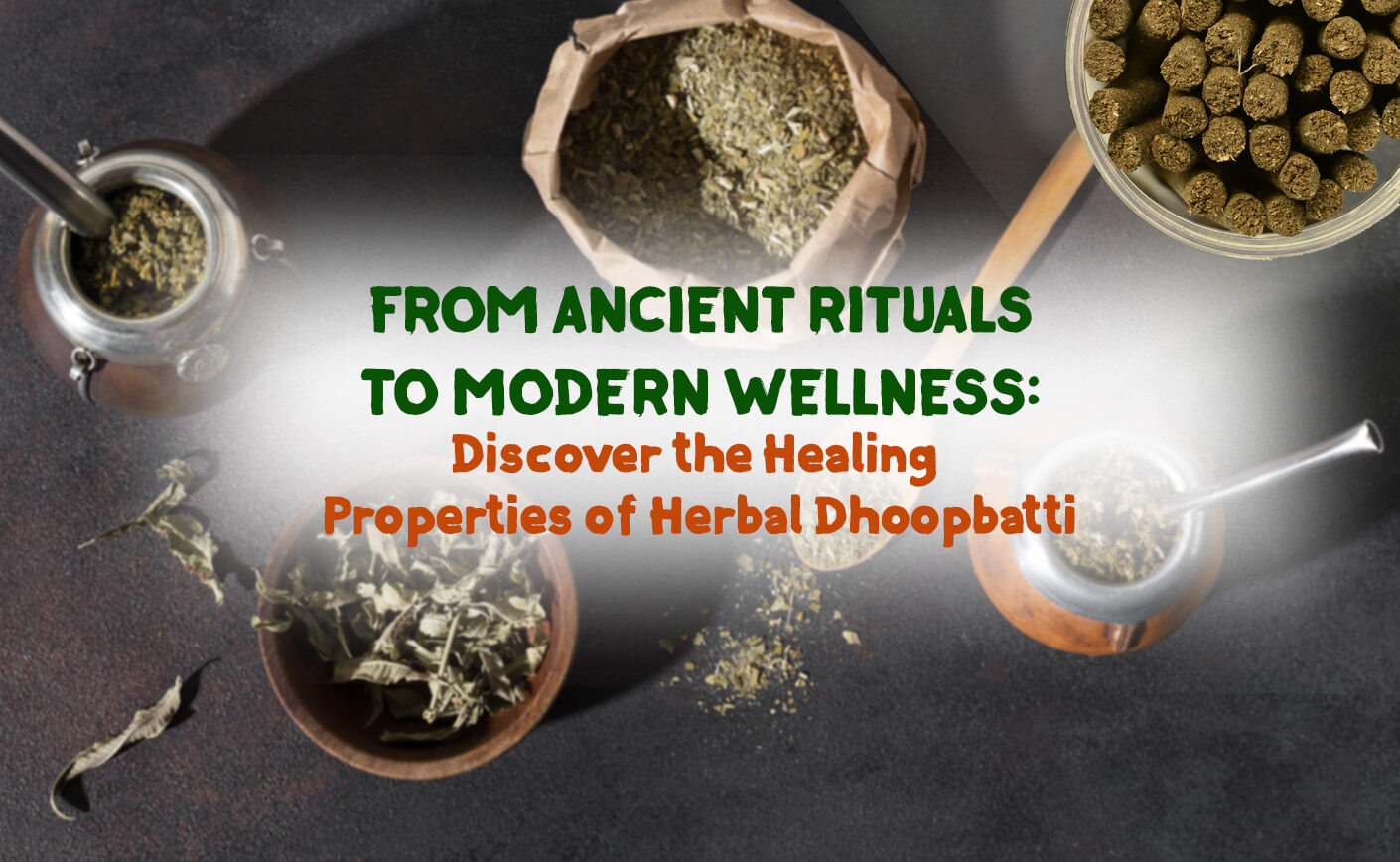Currently Empty: ₹0.00
From Ancient Rituals to Modern Wellness: Discover the Healing Properties of Herbal Dhoopbatti
History and origins of dhoopbatti
The history of dhoopbatti can be traced back to ancient civilizations where it was used as an offering to the gods and a means to purify the environment. The practice of burning incense has been prevalent in various cultures, including ancient Egypt, India, China, and Japan. In India, dhoopbatti has deep roots in Ayurveda, the traditional system of medicine, and is considered an essential part of daily rituals.
The ingredients used in dhoopbatti vary depending on the region and tradition. However, the common thread is the use of natural herbs and resins, carefully selected for their aromatic and therapeutic properties. These herbs are dried, ground, and mixed with a binding agent to form incense sticks. The art of making dhoopbatti has been passed down through generations, preserving the ancient wisdom and techniques.
The significance of dhoopbatti in ancient rituals
In ancient rituals and religious ceremonies, dhoopbatti holds great significance. It is believed that the aromatic smoke carries prayers and intentions to the divine realm, creating a connection between the physical and spiritual worlds. The act of lighting dhoopbatti is seen as a way to honor and invoke the presence of deities, while purifying the surroundings and inviting positive energies.
Different cultures have their own unique rituals and traditions associated with dhoopbatti. In India, for example, it is common to light dhoopbatti during daily prayers, meditation, and auspicious occasions such as weddings and festivals. The fragrance of dhoopbatti is believed to attract positive vibrations and dispel negative energies, creating an atmosphere of peace and harmony.
Understanding the healing properties of herbal dhoopbatti
The healing properties of herbal dhoopbatti can be attributed to the therapeutic qualities of the herbs and resins used in its composition. Each ingredient has its own unique set of benefits, making dhoopbatti a versatile tool for holistic healing.
One of the commonly used herbs in dhoopbatti is sandalwood. Known for its calming and grounding properties, sandalwood helps to alleviate stress, anxiety, and depression. Its sweet and woody aroma has a soothing effect on the mind, promoting mental clarity and relaxation.
Another popular herb used in dhoopbatti is lavender. With its delicate floral scent, lavender is renowned for its ability to induce relaxation and improve sleep quality. It is often used in aromatherapy to reduce insomnia and promote a sense of tranquility.
Frankincense, a resin derived from the Boswellia tree, is another key ingredient in dhoopbatti. It has been used for centuries for its spiritual and medicinal properties. Frankincense is believed to enhance spiritual practices, deepen meditation, and promote emotional healing. Its rich and earthy aroma helps to create a sacred atmosphere conducive to introspection and self-reflection.
Types of herbs used in dhoopbatti and their benefits
Dhoopbatti is made from a wide variety of herbs, each with its own unique set of benefits. Here are some of the most commonly used herbs in dhoopbatti and their therapeutic properties:
1. Sandalwood: Promotes relaxation, relieves anxiety, and enhances mental clarity.
2. Lavender: Induces sleep, reduces stress, and uplifts mood.
3. Rose: Calms the mind, balances emotions, and promotes self-love.
4. Jasmine: Eases depression, boosts confidence, and enhances romantic feelings.
5. Patchouli: Grounding, aphrodisiac, and enhances spiritual connection.
6. Cedarwood: Clears negative energy, aids in meditation, and promotes courage.
7. Nag Champa: Balances chakras, uplifts spirits, and enhances spiritual experiences.
These are just a few examples of the herbs used in dhoopbatti and their respective benefits. The combination of different herbs creates a unique blend that can address various physical, emotional, and spiritual needs.
How to use herbal dhoopbatti for physical and mental wellness
Incorporating herbal dhoopbatti into your daily self-care routine can have a profound impact on your overall well-being. Here are some ways to use dhoopbatti for physical and mental wellness:
1. Meditation: Light a dhoopbatti before starting your meditation practice. Allow the fragrance to fill the space, creating a serene and sacred environment. The aroma of dhoopbatti can help calm the mind, deepen focus, and enhance the overall meditation experience.
2. Sleep Aid: Burn a dhoopbatti in your bedroom before going to bed. The soothing aroma of herbs such as lavender and sandalwood can help relax the mind and body, promoting a restful night’s sleep. Place the dhoopbatti in a safe holder and let it burn for a few minutes before extinguishing.
3. Stress Relief: Whenever you feel stressed or overwhelmed, light a dhoopbatti and take a few moments to inhale the aroma deeply. The calming scents of herbs like rose and jasmine can help relax the nervous system, reduce anxiety, and promote a sense of peace.
4. Purification: Use dhoopbatti to cleanse and uplift the energy of your living space. Light a dhoopbatti and walk around the room, allowing the smoke to reach every corner. Visualize the smoke purifying the space, removing any negativity or stagnant energy. Open windows and doors to let fresh air in afterward.
Incorporating dhoopbatti into your daily self-care routine
To fully harness the benefits of herbal dhoopbatti, consider incorporating it into your daily self-care routine. Here are some ideas to get you started:
1. Morning Ritual: Begin your day by lighting a dhoopbatti and setting your intentions for the day ahead. Take a few moments to breathe in the aroma and visualize positive outcomes. This simple act can help you start your day with clarity and focus.
2. Evening Wind-Down: As part of your evening wind-down routine, light a dhoopbatti to create a peaceful atmosphere. Allow the fragrance to help you relax and unwind after a long day. Practice deep breathing while enjoying the scent, releasing any tension or stress.
3. Yoga and Exercise: Enhance your yoga or exercise practice by burning dhoopbatti during your sessions. The aroma can help create a sacred space and deepen your mind-body connection. Choose a dhoopbatti with energizing scents like cedarwood or patchouli to invigorate your practice.
4. Creative Inspiration: If you’re feeling creatively blocked, burn dhoopbatti while engaging in creative activities such as painting, writing, or playing music. The aromatic scents can stimulate your senses and inspire new ideas and expressions.
Where to buy authentic herbal dhoopbatti
When purchasing herbal dhoopbatti, it is important to choose authentic and high-quality products. Look for reputable sellers who source their ingredients ethically and follow traditional manufacturing techniques. Online marketplaces, specialty stores, and spiritual boutiques are good places to start your search. Read customer reviews and check for certifications to ensure the authenticity of the dhoopbatti.
DIY herbal dhoopbatti recipes for customization
For those who enjoy a hands-on approach, making your own herbal dhoopbatti can be a rewarding and personalized experience. Here’s a simple recipe to get you started:
Ingredients:
– 2 parts sandalwood powder
– 1 part dried lavender flowers
– 1 part dried rose petals
– 1 part frankincense resin
– 1 part cedarwood powder
– 1 part patchouli leaves
Instructions:
1. Grind the dried herbs and resins into a fine powder using a mortar and pestle or a grinder.
2. Mix the powdered ingredients together thoroughly.
3. Slowly add a small amount of water or a natural binder such as gum arabic to the mixture, while kneading it with your hands. Continue adding water until the mixture holds together without crumbling.
4. Shape the mixture into thin sticks or cones and let them dry in a cool, dry place for several days.
5. Once completely dry, your homemade herbal dhoopbatti is ready to be used.
Feel free to experiment with different herbs and proportions to create your own signature blend of dhoopbatti. Adding essential oils can also enhance the fragrance and therapeutic properties of your homemade incense.
Conclusion: Embracing the ancient art of herbal dhoopbatti for holistic healing
Herbal dhoopbatti has been cherished for centuries as a powerful tool for healing, purification, and spiritual connection. Its enchanting aroma and therapeutic properties have made it a beloved part of ancient rituals and modern wellness practices.
Whether you incorporate dhoopbatti into your meditation practice, use it to create a peaceful environment, or simply enjoy its soothing fragrance, the ancient art of herbal dhoopbatti offers a pathway to holistic healing. By embracing this age-old tradition, you can tap into the wisdom of the past and experience the profound benefits of natural aromatherapy.
Discover the healing properties of herbal dhoopbatti and embark on a transformative journey of self-care, relaxation, and spiritual growth. Let the fragrant smoke transport you to a place of tranquility and inner peace, as you explore the ancient rituals and modern applications of this aromatic art.


